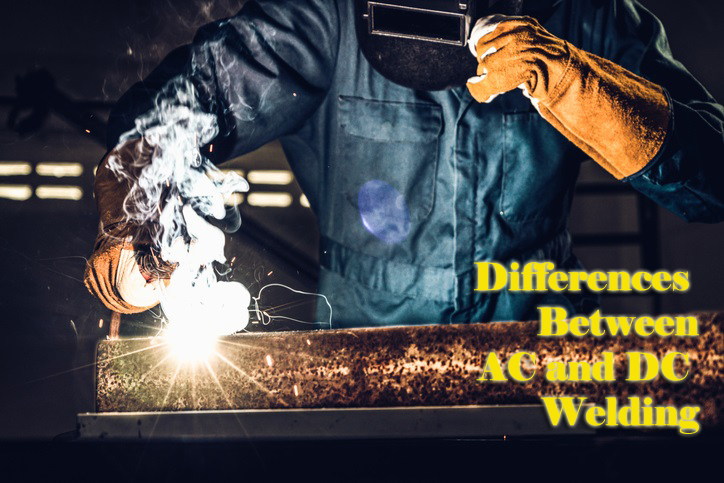
AC DC Welding Difference
Not sure what’s the difference between AC and DC welding? Electricity flows either in an alternating or direct current. The difference between AC and DC polarity is how electrons move through a conductor. The strength and quality of the weld depend on using the right polarity.
An arc welding machine is essentially the power supply that creates the current of electricity to liquefy the welding electrode. Welding machines operate with two current choices– AC and DC. This electrical current is constant and stable, which provides a safe power source for arc welding.
To create the best welds, it’s essential to use the correct power supply – alternating current (AC) or direct current (DC).
Learn more about what each type is and the different scenarios for both.
DC Welding
DC currents have a constant polarity flow in a single direction. Direct currents can be positive or negative. DC is used on most stick welding applications, and AC is usually used as a second choice. DC polarity creates a smoother welding output compared to AC. With DC welding, the magnetic field and current of the arc are constant, meaning more stable arcs, less spatter, and an overall easier weld.
At low welding currents, the DC arc has a uniform bead size and provides good wetting action of the molten weld metal. Most combination electrodes designed for both AC and DC welding obtain better results when set to DC.
When to Use DC?
DC welding works well for joining thinner metals and is commonly used in most stick welding applications, including TIG steel welding. Other applications include:
- Low-voltage devices, like cell phone batteries and remote controls
- In overhead and vertical applications
- When you need faster deposition rates when welding thin sheet metal (Use DC negative)
- Better penetration into the steel (Use DC positive)
- Joining thinner metals
- Single carbon brazing
AC Welding
In AC, the flow of electrons switches directions going back and forth, which is the opposite of DC, where the electrons flow in a single direction. The direction shift helps to transmit electricity over larger distances. Plus, switching to AC can help to fix arc blow problems. AC welding is beneficial when welding magnetized materials like machinery. AC can set the current higher than DC, offer fast fills, and be used for down-hand heavy plate welds. You’ve probably seen AC currents used in standard household outlets and appliances.
When Should You Use AC?
While DC is usually the first choice in welding, there are a few situations where AC polarity is used. The most obvious, of course, is when the power supply is AC only. However, there are other ‘less obvious’ applications, including:
- In shipbuilding, particularly for seam welds (AC can set the current higher than with DC)
- Down and heavy plate welds or when you need deeper penetration of plate metals
- When welding materials that have a magnetic field
- TIG welding aluminum
- Repairing machinery
If you are using stud welding of any kind on your worksite, it’s important to understand the advantages and disadvantages of AC and DC. Each can be used to accomplish different tasks. Remember, achieving proper penetration requires a good bead, strong weld, the right electrode, and the correct current and polarity.
Tips for Reducing Arc Blow:
- Change welding direction
- Clamp a steel block over the unfinished end of the weld
- Use a shorter arc length
- Weld toward the heavier tack or weld
Safety:
Always consult the manufacturer’s recommendation when choosing a current setting. The lower the setting, the smoother the arc, and less chance you’ll experience current ripple.
AC DC Welding Machine Maintenance:
After welding, be sure to use compressed air to remove dust, slag, and metal fragments from the welding machine to extend the product life.
